Another evening and another set of photographs of Comet PanSTARRS. These two images were taken looking to the west at Cathedral Rock in Sedona, Arizona.
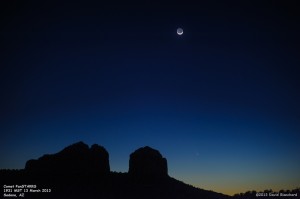
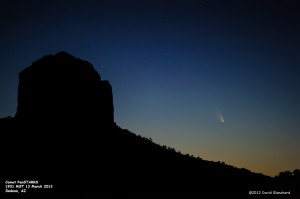
A late afternoon storm lingers into the evening producing lightning over the Cathedral Rocks and the Cockscomb.
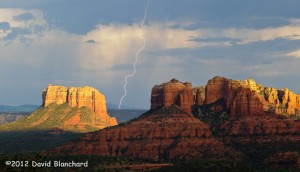
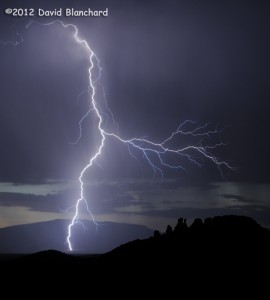
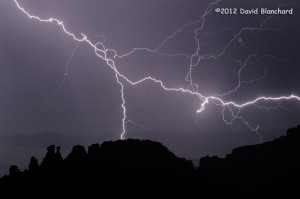
Even though it was full almost two days ago the waning gibbous “Supermoon” (Wikipedia; NASA) was still 98% illuminated this morning. I used “The Photographers Ephemeris” to find the perfect location — as well as a backup site — to get this sequence of images. Good thing, too, since my prime location was gated and locked!
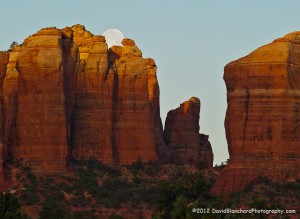
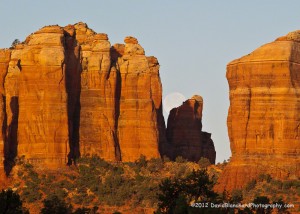
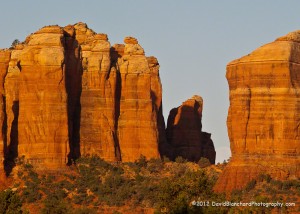
The first image shows the moon above Cathedral Rock (0554 MST) in Sedona, Arizona. It then slides down and to the right appearing again in the V-shaped notch (0604 MST) and then finally in the lowest portion of the gap (0611 MST). The sky was brightening rapidly so that in the final image the moon is almost overwhelmed by the sky.
Afterwards we hiked up the trail to the saddle in Cathedral Rock — where the moon had set less than an hour earlier.
Last week the planets Venus and Jupiter shone brightly in the western sky after sunset. This week, the new crescent moon joins the planets creating a triangle of brilliant objects in the sky.

Using star charts and other maps we determined that if we hiked a short distance along the Templeton Trail that the planetary and moon conjunction would be nicely positioned above Cathedral Rock in Sedona. As the sky darkened the celestial objects shone brightly but the lighting on the rocks was quickly fading. This image was the best combination of bright objects but with enough light to still see the details in the beautiful red rocks.
Later, as the planets and Moon set behind Cathedral Rock more stars appeared. To get some soft light on the tree I used a flash that was set to manual mode with the lowest light output and stood off to the side and fired the flash manually.
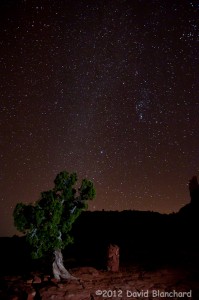
In a few weeks, Venus and Jupiter will be at their closest approach to each other. And it will be time for a another set of photographs.